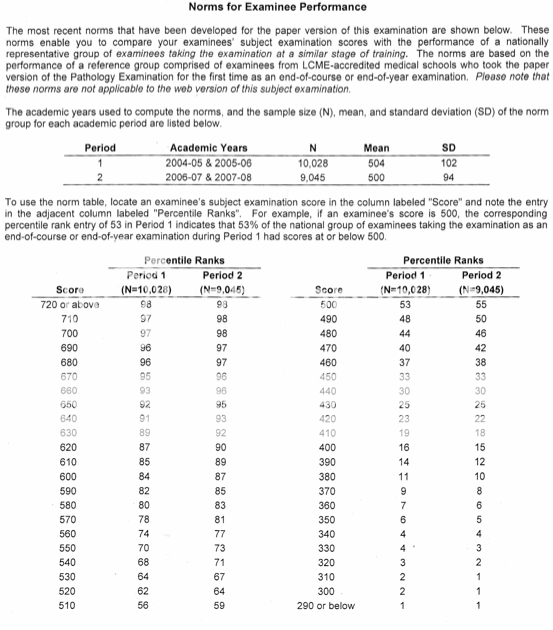Took the beast this morning, was pretty hard. Our version seemed to defy everything we've talked about here, booo!
- First, there were plenty of "one-word" associations. These really are worth memorizing. Now, of course, I agree with the comment above that you should have a more global, clinical picture of the situation (and this is definitely true in real life). But, I'm telling you, there were plenty of one-worders. You just gotta know them, otherwise you feel like a real tool.
- Our version did not seem to emphasize Chapter-1-thru-10 Robbins stuff (the basic, molecular, genetics path). Of course, there was some of that and it shouldn't be neglected. But our test had a significant amount of bone/muskuloskeletal/derm questions!
- There were 10-15 images, and you really had to know what was going on in the image. You could not answer the question simply by reading the questions stem, even if you understood everything discussed in the stem. You really had to "see" and comprehend some factoid in the image.
- About 50% of the questions were long, clinical oriented. The other 50% were more straightforward (first-orderish). You better get all of the latter correct, b/c the clinical oriented are hard! (just reading them, and keeping all of the info in your head, given time constraints).
- Test was long, finished with 1 minute to spare, and no opportunity to re-look at anything.
Good luck fellas, you're gonna need it on this one (at least the version we got) . . . hopefully the nbme gods will treat you better.

